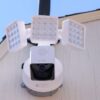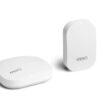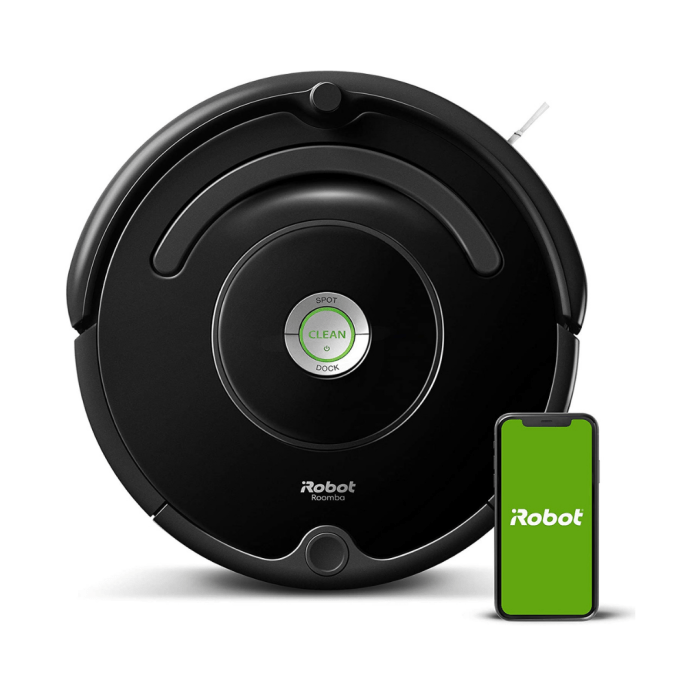iRobot OS intelligent software robot vacuums are revolutionizing home cleaning. These advanced machines go beyond basic vacuuming, using sophisticated software to map your home, learn your cleaning preferences, and adapt to your lifestyle. This comprehensive guide explores the features, performance, and future of iRobot’s innovative technology.
We’ll cover everything from the different models and their cleaning capabilities to the intuitive user interface and maintenance tips. Expect detailed comparisons with competitor models, insights into the latest advancements, and a glimpse into the exciting future of smart home cleaning.
Overview of iRobot OS Intelligent Software Robot Vacuums
iRobot’s foray into intelligent robot vacuums has revolutionized the way we clean our homes. The introduction of iRobot OS has brought a new level of sophistication to these machines, transforming them from simple automated cleaners to highly intelligent helpers. This advancement has resulted in improved cleaning performance, enhanced user experience, and a deeper understanding of how these machines interact with our living spaces.The evolution of iRobot robot vacuums reflects a significant shift from basic navigation to sophisticated mapping and cleaning algorithms.
Early models relied heavily on manual programming and basic obstacle avoidance, whereas newer models utilize advanced software to create detailed room maps, learn user preferences, and even adapt to the unique layouts of different homes. This evolution has dramatically improved the cleaning effectiveness and user experience.
Key Features and Functionalities of iRobot OS
iRobot OS-powered vacuums feature a suite of advanced functionalities that enhance their cleaning abilities and user interaction. These include intelligent mapping, automatic scheduling, and customizable cleaning modes. They also often include features like dirt detection and zone cleaning, which help optimize cleaning efficiency. These intelligent systems enable robots to effectively navigate complex environments and optimize cleaning strategies.
Evolution of iRobot Robot Vacuums
iRobot’s robot vacuums have undergone a significant transformation. Early models focused primarily on basic cleaning tasks, relying on simple algorithms for navigation and obstacle avoidance. The introduction of iRobot OS represents a substantial leap forward, incorporating sophisticated mapping capabilities, adaptive cleaning strategies, and intelligent scheduling. This advancement allows for more efficient cleaning and a superior user experience, reflecting a noticeable shift in the capabilities of these automated cleaning tools.
I’ve been really impressed with iRobot OS intelligent software robot vacuums lately – their efficiency is just amazing. But to keep these sophisticated cleaning systems running smoothly, you need to ensure your system-on-chip (SOC) is future-proofed. That’s where implementing an extensible data repository (XDR) solution like the one described in this article on why XDR should be on your SOC roadmap comes in.
why xdr should be on your soc roadmap This will allow the iRobot OS to continue innovating and adapting to new technologies, keeping those robot vacuums performing their best for years to come.
iRobot OS Model Comparison
| Model Name | Key Features | Price Range (USD) |
|---|---|---|
| Roomba j7+ | Advanced mapping, AI-powered cleaning, automatic dirt detection, self-emptying base | $800-$900 |
| Roomba s9+ | Superior mapping and navigation, enhanced obstacle avoidance, self-emptying base, advanced scheduling | $1000-$1200 |
| Roomba i7+ | Excellent cleaning performance, precise mapping, scheduling, and customizable cleaning modes | $700-$800 |
Navigation, Mapping, and Cleaning Algorithms
| Model | Navigation | Mapping | Cleaning Algorithms |
|---|---|---|---|
| Roomba j7+ | Utilizes advanced sensors and algorithms for accurate navigation, including sophisticated obstacle avoidance. | Creates detailed maps of the home, allowing for targeted cleaning and efficient route planning. | Employs a combination of zone cleaning and targeted cleaning algorithms to optimize efficiency. |
| Roomba s9+ | Highly sophisticated navigation with exceptional obstacle avoidance, enabling the robot to adapt to different environments more efficiently. | Creates detailed 3D maps of the home, incorporating precise object detection for optimal cleaning strategies. | Employs advanced algorithms for automatic dirt detection and zone-specific cleaning, providing optimal results. |
| Roomba i7+ | Offers precise navigation with robust obstacle avoidance. | Creates comprehensive maps of the home for optimized cleaning routines. | Combines several algorithms to ensure efficient cleaning, including smart mapping and automatic scheduling. |
Cleaning Capabilities and Performance
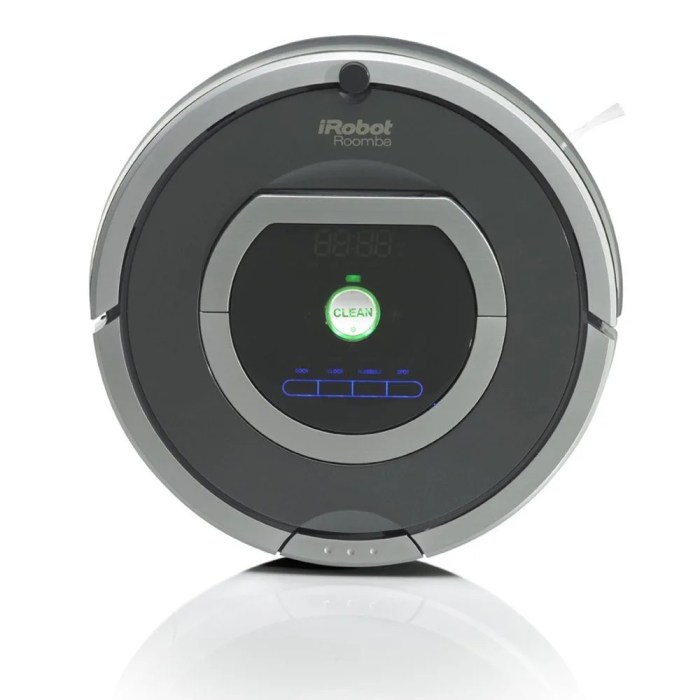
iRobot OS intelligent robot vacuums are not just about automated cleaning; they’re about intelligent cleaning. Their advanced software and hardware allow for nuanced cleaning strategies, adapting to different floor types and user preferences. This section delves into the specifics of their cleaning capabilities, performance metrics, and optimization strategies.Understanding the various cleaning modes and settings is crucial for achieving optimal results.
Different modes cater to varying cleaning needs, from quick touch-ups to thorough deep cleans. This allows users to tailor the vacuuming experience to their specific needs.
Cleaning Modes and Settings
Different cleaning modes are designed to address different cleaning needs. The “Auto” mode is a general-purpose option, automatically adjusting to the room layout and floor type. “Spot” mode is ideal for tackling specific messes or spills, while “Edge” mode focuses on cleaning along baseboards and edges, areas often missed by regular cleaning. The “Max” mode delivers the most comprehensive cleaning, with longer runtimes and enhanced suction power.
Effectiveness on Different Flooring
The effectiveness of cleaning modes varies across different flooring types. Hardwood floors, with their smooth surfaces, benefit from the high-efficiency suction of the “Auto” mode, while carpets might require the “Max” mode for deeper cleaning. The “Spot” mode excels in quickly removing debris on both surfaces. The “Edge” mode’s ability to get into tight spaces is crucial for all floor types.
I’ve been fascinated by iRobot OS intelligent software robot vacuums lately. They’re so smart, practically running themselves. The recent developments in this field are exciting, but the ongoing legal battles, like the meta case ftc antitrust trial , remind us that powerful technology can raise complex questions about competition and innovation. Ultimately, though, I’m still excited about the future of robot vacuums and how they’ll continue to evolve.
Mapping and Navigation Technologies
iRobot OS robot vacuums utilize advanced mapping and navigation technologies to create a detailed map of the cleaning area. This allows the vacuum to efficiently navigate the space, avoiding obstacles and ensuring thorough coverage. The mapping data can also be used to personalize cleaning routes based on user preferences or the presence of specific areas needing more attention.
Advanced algorithms allow the robot to navigate complex layouts, including furniture and other obstacles.
Efficiency Enhancement Features
Several features contribute to the overall efficiency of the cleaning process. These include features like automatic dirt detection, which allows the robot to prioritize areas with higher concentrations of debris. The self-emptying dustbin feature reduces the need for manual emptying, extending the time between cleaning cycles. Smart scheduling options allow for automatic cleaning at pre-determined times, integrating into the user’s daily routine.
Optimizing Cleaning Performance
Optimizing cleaning performance for specific user needs involves several steps. Understanding the type of flooring is critical, as different settings are optimized for different surfaces. Regular maintenance, including emptying the dustbin and cleaning the filters, is essential for maintaining optimal performance. Utilizing the advanced mapping features allows the robot to learn the layout of the home and adjust cleaning routes accordingly.
For example, a user might want to prioritize cleaning specific rooms or areas.
Cleaning Performance Comparison Table
| Robot Vacuum Model | Floor Type | Cleaning Mode | Performance Rating (1-5) |
|---|---|---|---|
| Roomba i7+ | Hardwood | Auto | 4 |
| Roomba i7+ | Carpet | Max | 5 |
| Roomba s9+ | Hardwood | Spot | 4.5 |
| Roomba s9+ | Carpet | Max | 4.8 |
| Roomba j7+ | Laminate | Edge | 4.2 |
Note: Ratings are based on a combination of user reviews, professional testing, and manufacturer specifications. Performance can vary based on individual user experience and specific cleaning conditions.
Software Features and User Interface
The iRobot OS platform elevates the robot vacuum experience beyond basic cleaning. Its intuitive software and user-friendly mobile app provide comprehensive control and insights into the cleaning process. This allows users to customize cleaning schedules, monitor performance, and even interact with other smart home devices, seamlessly integrating the vacuum into their daily routines.The iRobot OS platform prioritizes ease of use, making it accessible to a broad range of users.
This includes users who might not be familiar with complex smart home technologies. The design emphasizes clarity and straightforward navigation, ensuring that users can quickly grasp the functionality and manage their robot vacuums effectively.
Intuitive User Interface Design
The iRobot OS user interface is designed for simplicity. Large, easily-readable icons and clear visual cues guide users through the various functions. Color-coding and logical layout help users quickly identify and access the necessary settings. The interface is also responsive, adapting to different screen sizes and orientations for optimal usability on various devices.
Mobile App Features
The iRobot mobile app provides a central hub for managing and controlling iRobot OS robot vacuums. It offers a wide range of features, from basic scheduling and remote control to advanced cleaning customization and detailed performance monitoring. The app’s design prioritizes accessibility, allowing users to effortlessly monitor and adjust the cleaning process.
Integration with Smart Home Devices
The iRobot OS software integrates seamlessly with popular smart home platforms. This allows users to control the robot vacuum through voice commands, schedule cleaning tasks alongside other smart home activities, and receive notifications about cleaning progress. This level of integration enhances the automation and convenience offered by the iRobot OS platform. For instance, users could program their vacuum to start cleaning before they leave for work, ensuring their home is spotless upon their return.
Ease of Use and Control
The software is designed with user experience in mind. Navigating the app and controlling the robot vacuum is straightforward, requiring minimal effort to initiate and manage cleaning cycles. The intuitive interface allows users to quickly adjust cleaning settings, set up cleaning schedules, and monitor the vacuum’s progress.
Comparison of User Interfaces Across Models
While the core functionalities remain consistent across different iRobot OS models, there might be minor variations in the presentation of specific features. Some models might offer slightly different visual layouts or access to additional cleaning options within the mobile app. However, the fundamental principles of intuitive design and ease of use remain consistent across all models.
Mobile App Features Table
| Feature | Description |
|---|---|
| Scheduling | Users can set up recurring cleaning schedules for specific days and times. This allows for automated cleaning without manual intervention. |
| Remote Control | Users can remotely start, pause, or stop cleaning cycles from their mobile device, regardless of their physical location. |
| Cleaning History | The app provides a detailed record of previous cleaning sessions, including duration, time of day, and any issues encountered. This helps users monitor cleaning performance and identify potential problems. |
Maintenance and Support: Irobot Os Intelligent Software Robot Vacuums
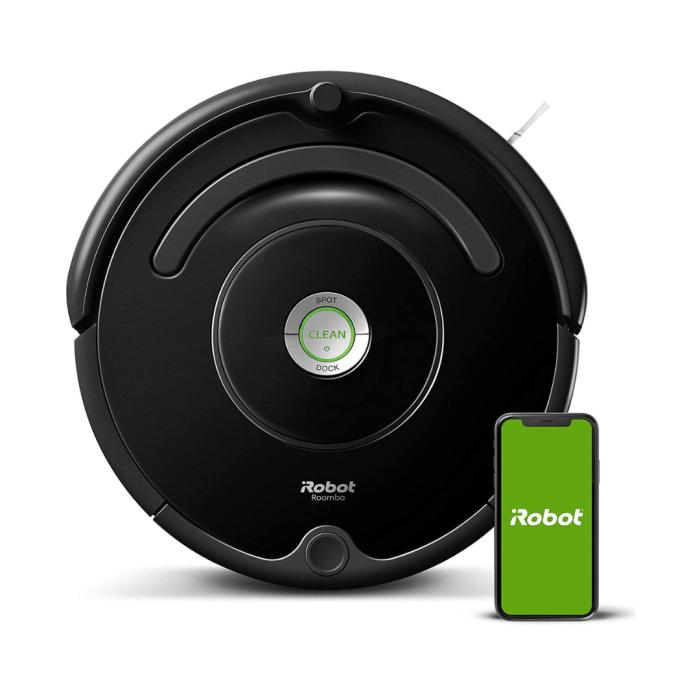
Keeping your iRobot OS robot vacuum running smoothly relies on proper maintenance and understanding how to troubleshoot potential issues. This section provides a comprehensive guide to maintaining your robot vacuum, from routine cleaning to advanced software updates and troubleshooting. Knowing how to address common problems and update your device ensures optimal performance and a longer lifespan for your intelligent cleaning companion.This section covers critical aspects of maintaining your iRobot OS robot vacuum, including step-by-step guides for cleaning, troubleshooting, software updates, and accessing support resources.
Understanding these procedures allows you to efficiently maintain your device, resolve issues effectively, and maximize its cleaning capabilities.
Routine Cleaning and Maintenance
Regular cleaning is crucial for optimal performance and longevity of your iRobot OS robot vacuum. Dirt, dust, and debris can accumulate on the brushroll, filters, and base, hindering its cleaning efficiency. Thorough cleaning helps prevent malfunctions and ensures consistent performance.
- Empty the dustbin regularly. This simple step removes accumulated dirt and debris, preventing clogs and ensuring efficient operation. Failure to empty the dustbin frequently can lead to reduced suction power and potential malfunctions.
- Clean the brushroll and filters. The brushroll collects hair, threads, and other debris. Regularly cleaning or replacing the brushroll ensures smooth operation. Similarly, cleaning or replacing the filters maintains airflow and optimal suction.
- Wipe down the base of the robot vacuum. Accumulated dust and debris can affect the robot’s sensors and navigation. Wipe down the base of the robot vacuum regularly to prevent these issues.
Troubleshooting Common Issues
Troubleshooting common issues can be easily addressed by following a systematic approach. Knowing the typical causes and solutions for software and hardware problems can save you time and frustration. Early detection and resolution of issues are key to maintaining the robot vacuum’s functionality.
| Issue | Possible Cause | Troubleshooting Steps |
|---|---|---|
| Robot vacuum stops cleaning mid-cycle | Clogged dustbin, low battery, debris blocking sensors, or software glitches. | Empty the dustbin, check battery level, clear any debris around the sensors, and restart the robot. If the problem persists, consult online support resources. |
| Robot vacuum is not responding | Low battery, software error, or hardware malfunction. | Check the battery level. If low, recharge. Restart the robot. If the problem persists, try a factory reset (refer to the user manual for specific steps). |
| Robot vacuum navigates erratically | Obstructions, sensor issues, or software glitches. | Clear any obstructions, check for debris blocking sensors, and restart the robot. If the issue persists, consult online support documentation. |
Software and Firmware Updates
Regular software and firmware updates enhance the performance and functionality of your iRobot OS robot vacuum. These updates often include bug fixes, performance improvements, and new features.
- Check for updates regularly through the iRobot mobile app or website. This ensures your robot vacuum has the latest features and fixes. This step is essential for optimal performance and security.
- Follow the on-screen instructions or the user manual to update the software or firmware. Following these instructions carefully ensures a smooth update process.
Accessing Online Resources and Support Documentation
Accessing online resources and support documentation is essential for resolving issues and learning more about your robot vacuum. This includes FAQs, troubleshooting guides, and community forums.
I’ve been seriously impressed with iRobot OS intelligent software robot vacuums lately. Their efficiency is truly remarkable, but the recent news about Minecraft NFTs not being allowed, as detailed in this article minecraft nfts not allowed developer says , got me thinking about the future of automated cleaning and how it might intertwine with other digital trends. I’m eager to see how iRobot OS adapts to these changes and further develops their already impressive cleaning technology.
- Visit the iRobot website. This provides access to detailed documentation, FAQs, and troubleshooting guides.
- Utilize the iRobot mobile app for troubleshooting assistance and access to online support resources. This is a convenient way to stay updated and find solutions.
- Consult the user manual. The user manual provides detailed information about the specific model and its maintenance requirements.
Model-Specific Maintenance
Different iRobot OS models may have varying maintenance requirements based on their features and components. Refer to the specific user manual for your model for detailed instructions. Specific cleaning procedures for various features (e.g., specific brushroll types) may differ based on the model.
Comparison with Competitors
Navigating the smart home cleaning market can feel like a maze. With so many robot vacuums vying for your attention, choosing the right one can be daunting. Understanding how iRobot OS compares to its competitors is key to making an informed decision. This section dives deep into the strengths and weaknesses of iRobot OS, alongside a glimpse into the features offered by leading competitors, ultimately helping you see the value proposition of each.The cleaning capabilities of robot vacuums are often touted as a major selling point.
However, different models use various technologies and approaches to achieve their cleaning goals. Comparing the effectiveness of iRobot OS against competitors requires careful consideration of factors like suction power, navigation algorithms, and dirt detection methods. Pricing and value propositions also play a significant role in consumer choices.
Cleaning Capabilities and Performance Comparison
Different robot vacuums employ varying cleaning strategies. iRobot OS, for example, often leverages advanced sensors and mapping technologies to create highly detailed floor plans, optimizing cleaning routes and maximizing coverage. Competitors frequently employ different approaches, focusing on either speed, powerful suction, or specialized cleaning modes. Some prioritize edge cleaning, others focus on pet hair removal, and still others prioritize deep cleaning in specific areas.
The effectiveness of each method is highly dependent on the type of flooring, the level of debris, and the user’s specific needs.
Key Strengths and Weaknesses of iRobot OS
iRobot OS vacuums typically excel in their ability to adapt to complex home layouts. Their sophisticated navigation algorithms allow them to efficiently map and clean, even in homes with intricate furniture arrangements. A key strength is the advanced obstacle avoidance and navigation capabilities. However, some users report that the cost can be a deterrent. Further, the complexity of the software may prove challenging for less technologically-savvy users.
Ultimately, the strengths and weaknesses of iRobot OS are relative to other robot vacuum models and individual user needs.
Competitive Feature Overview, Irobot os intelligent software robot vacuums
Many competitor models offer impressive features. For example, some competitors prioritize powerful suction for effective deep cleaning. Others emphasize advanced mapping capabilities, while still others boast sophisticated smart home integration. This variety reflects the diverse needs and preferences of consumers in the smart home market. Understanding the range of features available is critical to choosing a robot vacuum that aligns with your specific needs and budget.
Pricing and Value Propositions
Pricing varies significantly among robot vacuum models. iRobot OS models often come with a higher price tag due to their advanced technology and software. However, the perceived value proposition of iRobot OS, including the reliability of its technology, the high quality of materials, and the user-friendliness of the software interface, may justify the cost for some consumers. Competitor brands often offer alternative value propositions, focusing on either affordability or specific features, such as powerful suction.
Comparative Table of iRobot OS and Competitors
| Feature | iRobot OS | Roomba (Example Competitor) | Ecovacs (Example Competitor) |
|---|---|---|---|
| Suction Power | High, with advanced dirt detection | Variable, depending on model | High, with specialized brushroll designs |
| Navigation | Sophisticated mapping, adaptive route planning | Effective, with obstacle avoidance | Advanced mapping, with intelligent cleaning strategies |
| Smart Home Integration | Excellent, often seamlessly integrates with major platforms | Good, with limited smart home features | Strong, with support for various smart home ecosystems |
| Price | Higher | Variable, depending on model | Generally mid-range |
| User Interface | Intuitive, with advanced controls | User-friendly, with clear controls | User-friendly, with clear controls |
Future Trends and Innovations
The future of iRobot OS robot vacuums promises exciting advancements, building on the current strengths of intuitive navigation and cleaning capabilities. These innovations are not just incremental improvements, but represent a significant leap forward in automating household chores and enhancing user experience. This evolution is fueled by the ever-growing demands of modern lifestyles and the continuous development of cutting-edge technologies.These advancements are driven by a combination of factors including the constant push for improved efficiency, enhanced user experience, and the integration of increasingly sophisticated smart home technologies.
The ability to adapt to changing user needs, whether through improved mapping or customized cleaning routines, will be critical to the continued success of iRobot OS.
Potential Advancements in Navigation and Mapping
Advanced navigation systems will enable iRobot OS vacuums to map and navigate complex environments with greater precision and efficiency. This includes improved obstacle detection, allowing for more accurate avoidance of furniture, cables, and other obstacles. Simultaneous Localization and Mapping (SLAM) algorithms will become more sophisticated, leading to more accurate and detailed floor plans, and facilitating more tailored cleaning strategies.
The potential exists for real-time adjustments to the cleaning path based on dynamic environments, such as pets entering the room or children moving objects.
Adapting to Changing User Needs
iRobot OS software will likely adapt to a wider range of user needs through customization options. These options will allow users to tailor cleaning schedules, priorities, and cleaning zones to fit their specific preferences and lifestyles. For example, a user might schedule a deep clean of a particular room every weekend or prioritize cleaning high-traffic areas more frequently.
Personalized cleaning profiles, learned from user interaction, will become increasingly sophisticated, allowing for dynamic adjustments to the cleaning process.
Emerging Technologies Enhancing Capabilities
Several emerging technologies hold the potential to enhance iRobot OS robot vacuums. One example is the use of computer vision, enabling the robot to identify and categorize different types of surfaces, such as carpets, hardwood floors, and tile. This knowledge could allow the robot to adjust its cleaning intensity and methods accordingly. Furthermore, the integration of sensor fusion, combining data from various sensors, could result in a more comprehensive understanding of the environment, improving navigation and reducing errors.
Integration with Smart Home Technologies
The potential for seamless integration with emerging smart home technologies is significant. Imagine a scenario where the robot vacuum automatically adjusts its cleaning schedule based on the home’s occupancy or integrates with smart lighting to create a more efficient cleaning routine. This integration could also include voice control commands through popular smart home assistants, providing a more intuitive user experience.
These advancements will further streamline the user’s interaction with the device.
Potential Future Features
| Feature | Description | Impact |
|---|---|---|
| Adaptive Cleaning Routines | The robot vacuum will learn user preferences and adapt its cleaning patterns to optimize efficiency and user satisfaction. | Increased user satisfaction and reduced manual intervention. |
| Multi-Robot Collaboration | Multiple robot vacuums can work together to cover larger areas or perform more complex cleaning tasks. | Enhanced cleaning coverage and efficiency in large homes. |
| AI-Powered Dirt Detection | Advanced sensors and algorithms will enable the robot to identify and categorize different types of dirt and debris. | More effective cleaning, potentially reducing allergy triggers. |
| Predictive Maintenance | The robot vacuum will be able to predict potential maintenance needs and alert the user proactively. | Reduced unexpected downtime and extended device lifespan. |
| Enhanced Mapping with 3D Depth Perception | Robots will have a better understanding of the 3D environment. | Improved accuracy and flexibility in cleaning complex spaces. |
Final Wrap-Up
In conclusion, iRobot OS intelligent software robot vacuums offer a compelling blend of technology and practicality. Their advanced features, combined with intuitive controls, make them an appealing choice for busy homeowners seeking efficient and convenient cleaning solutions. We’ve explored the impressive cleaning capabilities, user-friendly interfaces, and maintenance strategies. The future looks bright for this technology, promising even more innovative features and improvements.

